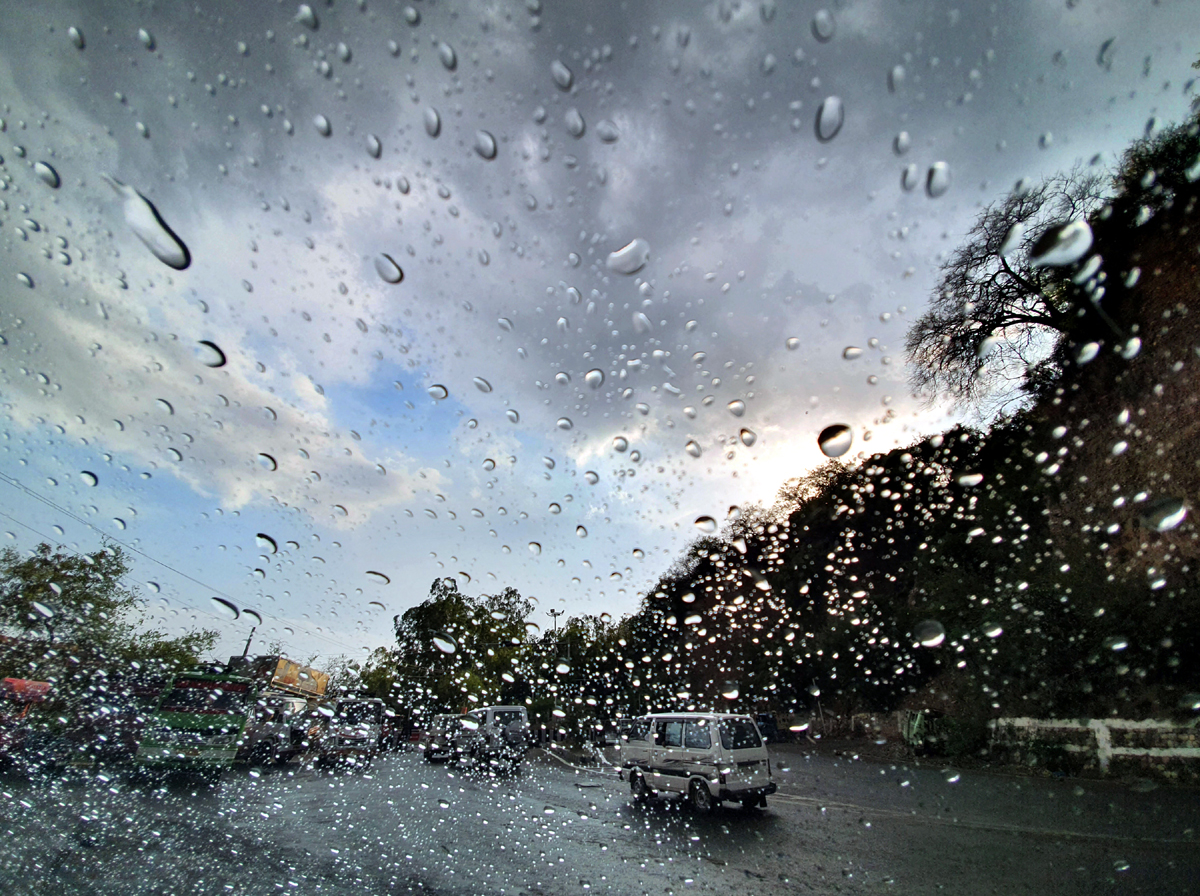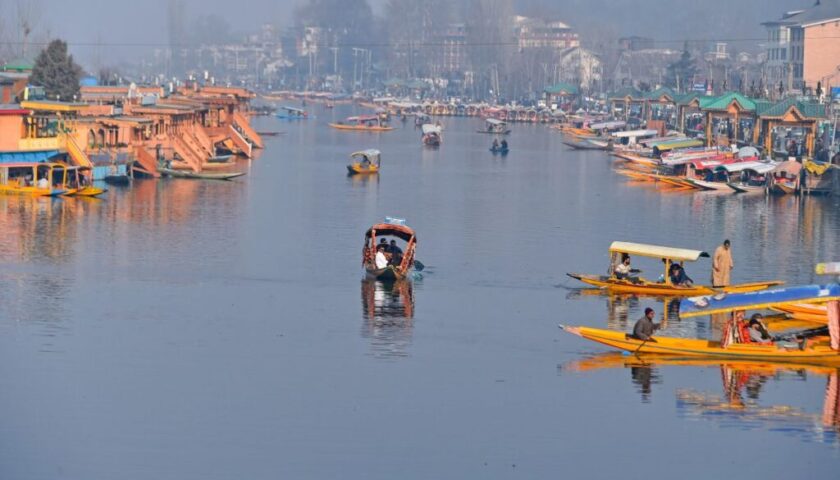From Record Temperatures to Flooded Streets, Climate Whiplash Hits the Valley Hard
By: Javid Amin | Srinagar | 08 July 2023
From Fire to Flood
In a stunning display of nature’s volatility, the Kashmir Valley went from being gripped by a historic heatwave to being battered by torrential rains, hailstorms, and violent winds—all within the span of 48 hours.
The change brought temporary relief to residents who had endured suffocating temperatures for weeks. But it came with a punishing price: flash floods, uprooted trees, waterlogged homes, disrupted traffic, power outages, and even loss of life.
This is not just a weather event—it’s a climate crisis unfolding in real time.
The Great Weather Flip: 72-Year Heat Record Broken
On Saturday, July 5, Srinagar recorded 37.4°C, the highest July temperature since 1953, leaving residents gasping and power grids overstretched.
Hospitals reported a spike in heatstroke and dehydration cases, while the elderly and infants were particularly vulnerable. Cooling appliances ran non-stop, pushing the city’s already strained energy infrastructure to the brink.
Then came July 7.
In a matter of hours, the temperature plummeted to 20°C—a dramatic 17-degree drop. The Valley, which had felt like a furnace, now resembled a storm-lashed tundra.
The Monday Storm: What Happened?
The downpour began around 5:00 PM, sweeping through key urban and rural areas:
-
Srinagar: Natipora, Chanpora, Lal Chowk, Bemina, Downtown
-
North Kashmir: Sopore, Magam
-
South Kashmir: Pulwama, Anantnag
-
Pir Panjal Zone: Poonch, Rajouri
The rainfall was accompanied by large hailstones—some as big as marbles—that blanketed the roads, especially in Magam and Sopore, creating scenes more fitting for winter.
City Underwater: Srinagar’s Drainage Crisis
Within 30 minutes of the rain, Downtown Srinagar, Khanqah-e-Moula, Nowhatta, and Rajouri Kadal were inundated. Videos circulating online showed:
-
Water gushing into shops and homes.
-
Rickshaws floating in submerged lanes.
-
Manholes overflowing, exposing sewage.
Residents blamed the Srinagar Municipal Corporation (SMC) for failing to de-silt drains ahead of the monsoon. Local shopkeeper Ghulam Qadir in Bohri Kadal said:
“Every year, the same story. A little rain and we’re underwater. What are these taxes for?”
The SMC, however, claimed it had carried out de-silting in over 65% of the city drains—a claim now under public scrutiny.
Rural Woes: Cloudbursts, Landslides, and Power Outages
In Poonch district, a cloudburst triggered flash floods and landslides, damaging multiple houses and rendering roads impassable.
-
A 45-year-old woman in Surankote was swept away in the flash floods.
-
The Mandi-Sawjian road was blocked due to debris.
-
Transformer stations were knocked out in Budhal and Thanamandi, plunging villages into darkness.
The State Disaster Response Force (SDRF) and local volunteers carried out rescue operations under difficult conditions, wading through waist-deep water in some locations.
Poonch Tragedy: A Life Lost in the Deluge
The most heartbreaking event was the loss of life in Poonch, where a local resident, Shafiqa Begum, was killed after being caught in a cloudburst-induced flash flood.
Her family said she was trying to gather clothes from an outdoor line when the wall of water came.
This death underscores the life-and-death stakes of inadequate early warning systems and the unpredictability of extreme weather in Kashmir’s hill regions.
Hailstorm Havoc: Crops Crushed, Roads Iced
While Srinagar’s roads turned into waterways, Magam and Sopore were pelted with hailstones that:
-
Shattered tin roofs.
-
Flattened vegetable crops.
-
Caused sudden traffic halts on the Srinagar-Baramulla highway.
Apple orchards in Budgam and Baramulla have reportedly sustained over 30% damage, according to early estimates by local horticulture officers.
Fruit grower Farooq Ahmad Dar lamented:
“After the heatwave, we prayed for rain. Not this storm. Nature is testing us.”
Climate Whiplash: From Global Trends to Local Impact
Meteorologists are calling this pattern “climate whiplash”—extreme oscillations between hot and cold, dry and wet.
-
Global warming increases the atmosphere’s moisture-holding capacity.
-
This leads to intense short-burst rainfall, not gentle monsoon drizzles.
-
Jet stream changes may be pushing cold air fronts into heat zones, causing violent storms.
Kashmir, nestled in the fragile Himalayan ecosystem, is highly sensitive to climate volatility. Such fluctuations are likely to become more common in the coming years.
Infrastructure Under Strain: Kashmir’s Urban Vulnerability
The storm has once again exposed critical infrastructure weaknesses:
-
Aging power lines downed by wind gusts.
-
Uncovered drains that overflow within minutes.
-
No stormwater diversion systems in core areas.
Urban planners and civil engineers have warned for years that Srinagar and other towns are ill-equipped to handle climate-era monsoons.
Dr. Bilal Mir, an urban ecologist, explains:
“We built cities for 20th-century rain, not 21st-century storms. Urban sprawl and lack of climate-sensitive planning is Kashmir’s ticking bomb.”
Weather Forecast: What Lies Ahead?
The Meteorological Department of Jammu & Kashmir has issued an extended weather alert till July 9, predicting:
-
Thundershowers
-
Localized flash floods
-
Cloudbursts in upper reaches
-
Landslides in hilly terrain
Districts on high alert include Poonch, Rajouri, Baramulla, Ganderbal, and Kupwara.
Tourists in Sonamarg and Gulmarg have been advised to limit movement and avoid treks or river-side activities.
MeT Department’s Role: Warnings vs. Preparedness
Critics have accused the MeT Department of issuing vague alerts instead of specific location-based early warnings.
However, officials defend themselves, citing:
-
Kashmir’s difficult terrain.
-
Lack of Doppler radar coverage in key districts.
-
Budgetary constraints on upgrading forecasting tech.
Still, the public outcry suggests an urgent need for real-time weather communication systems, particularly for vulnerable rural and hillside communities.
Community Response: The Spirit of Solidarity
Amid the chaos, Kashmiris rose to the occasion:
-
Locals in Chanpora used buckets to clear blocked drains.
-
In Baramulla, youth groups helped stranded motorists.
-
Mosque loudspeakers in Sopore warned people to stay indoors and offered shelter to flood-hit families.
The community’s quick response often outpaced that of government agencies—reflecting both a strong social fabric and a vacuum in emergency response infrastructure.
Political Reaction: What Are Leaders Saying?
Political leaders across the spectrum have issued statements:
-
Omar Abdullah (NC): “Drainage failure is not an act of God. It’s negligence. This must be fixed before the next storm.”
-
Mehbooba Mufti (PDP): “Climate change is here. We can’t manage with 90s infrastructure. Where’s the disaster preparedness?”
-
BJP’s Altaf Thakur: “The Centre will ensure funding for better drainage and MeT technology in Kashmir.”
But locals remain skeptical, citing a long history of post-disaster promises and pre-disaster inaction.
Environmental Experts Weigh In
Environmentalists are unanimous in their diagnosis: this is a climate emergency in slow motion.
Dr. Shahidul Haq, a senior climatologist, warns:
“This won’t be a one-time event. Kashmir is now squarely in the path of climate disruption.”
His suggestions include:
-
Installing automatic weather stations in every district.
-
Upgrading stormwater management systems.
-
Launching community-based adaptation plans.
Long-Term Implications: Is Kashmir Climate-Ready?
Kashmir’s delicate ecological balance, outdated urban infrastructure, and limited disaster readiness mean it’s not equipped to handle frequent climate shocks.
The region must:
-
Adopt nature-based solutions like wetland restoration.
-
Mandate climate risk audits for all new development.
-
Integrate climate literacy into school curriculums.
Without proactive measures, the next weather swing could be deadlier, costlier, and more disruptive.
Final Thoughts: When Relief Becomes a Reckoning
The storm that brought relief also brought ruin. It reminded Kashmiris of the double-edged nature of nature itself—a giver of life, but also a force of destruction when ignored or mismanaged.
Climate change is not coming. It is here. And if Kashmir doesn’t respond with vision and urgency, this relief-drenched chaos will become the new normal.




